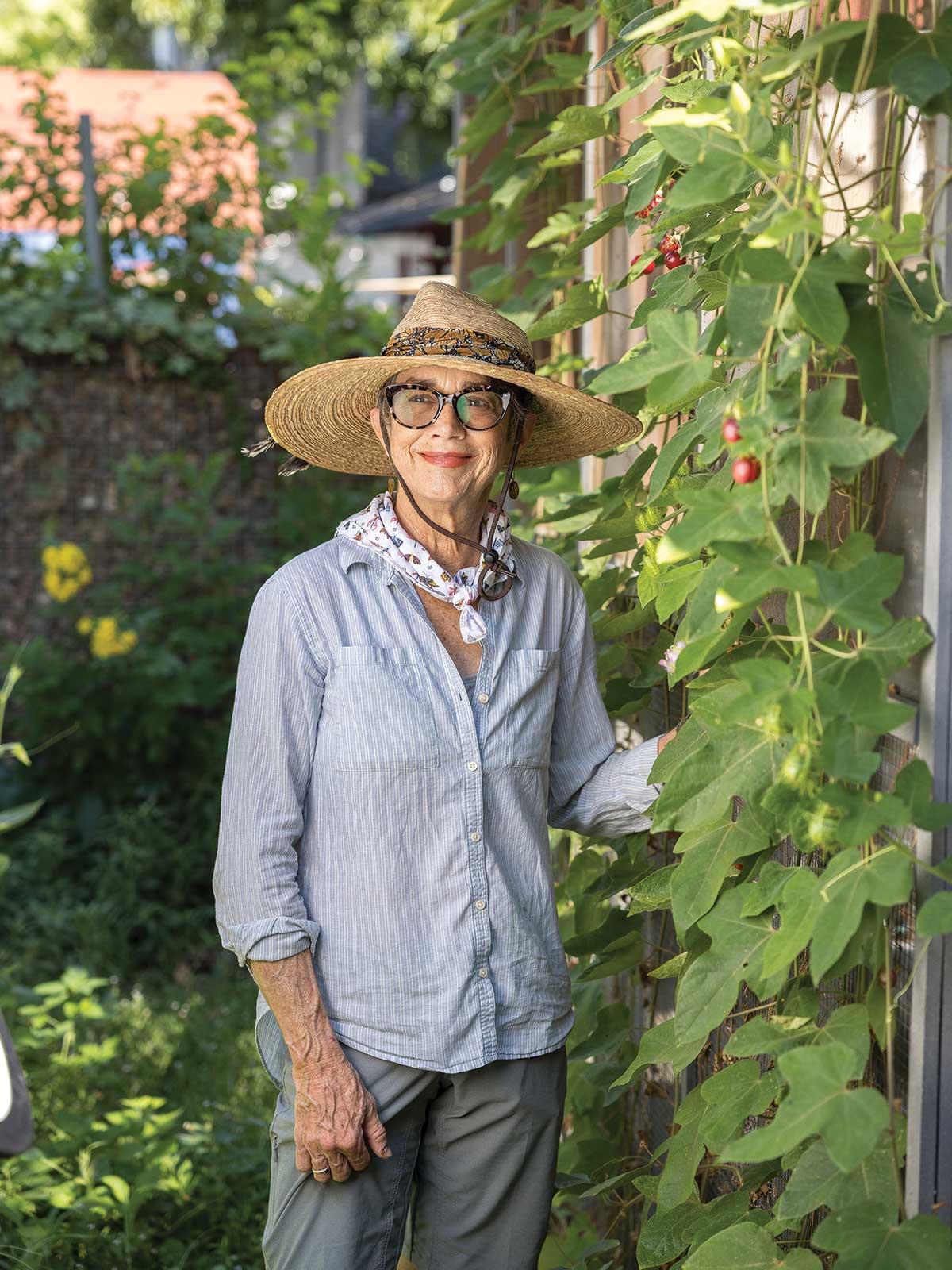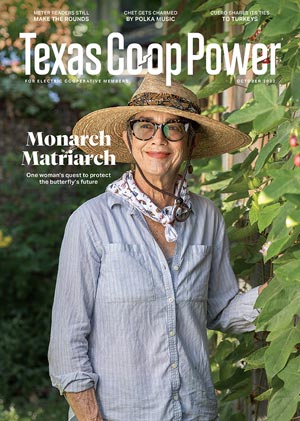Monika Maeckle found her passion in a dry streambed of the San Saba River.
It was October 2004 when she and her husband drove from their ranch, a Hill Country getaway on the Llano River, over to a friend’s place near tiny Hext for a “tagging event.” She didn’t know what that was really, but Maeckle likes an adventure and loves the outdoors.
At sunset, monarch butterflies started cascading from the sky. The group caught them in long nets, carefully plucking the bright orange marvels out to tag their wings with coded stickers. They tagged a couple hundred monarchs that evening, then set them free. Maeckle was completely smitten.
“It was a passion play from the beginning,” says Maeckle, a member of Pedernales Electric Cooperative. “It was this magical thing. I was entranced.”
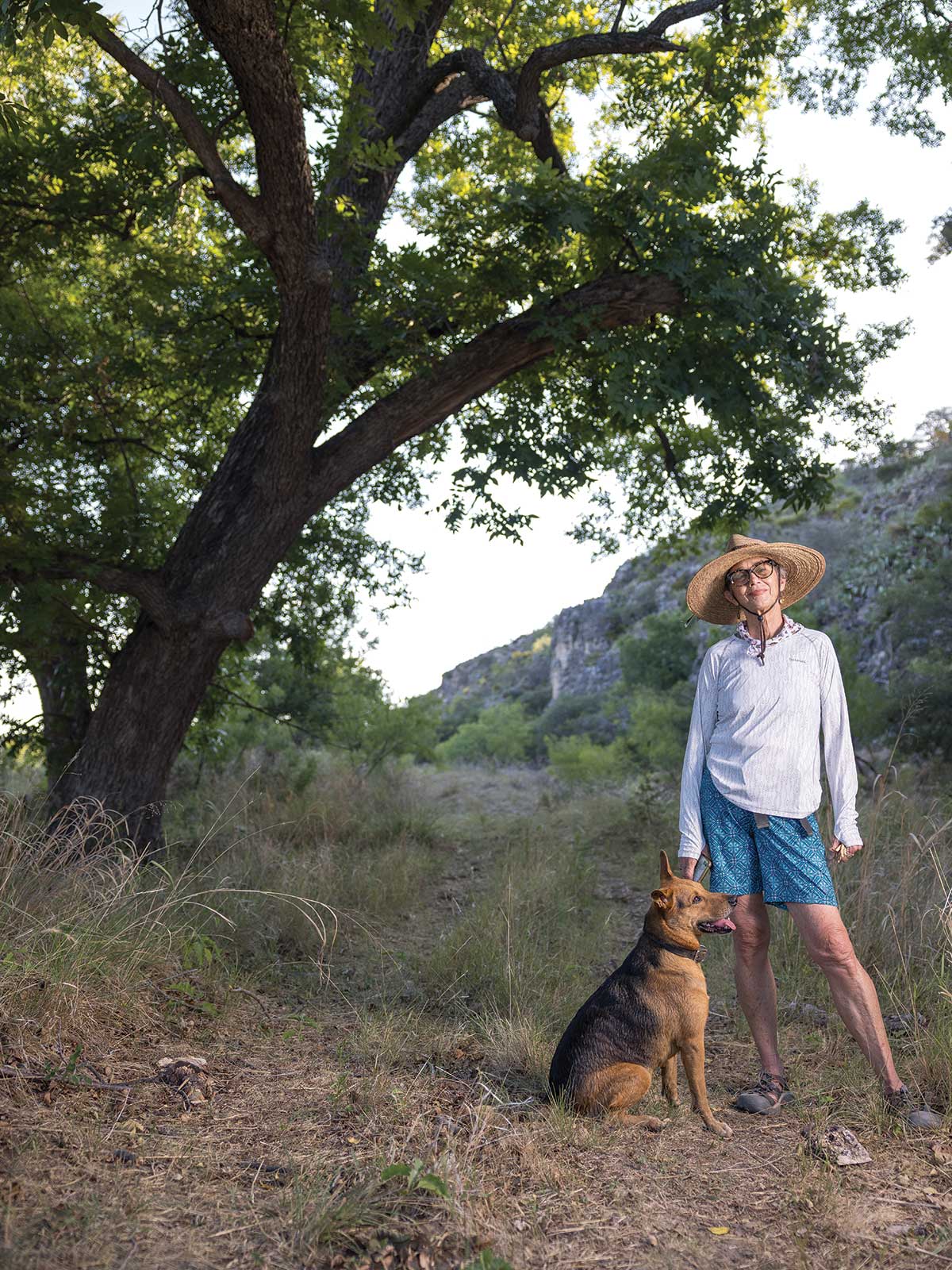
Maeckle launched the website Texas Butterfly Ranch and is the founding director of the Monarch Butterfly and Pollinator Festival in San Antonio.
Julia Robinson
The San Antonio-based communications and marketing pro spent the following months reading and researching everything she could find about the monarchs’ annual migration to Mexico. A year later, on a Saturday in October, Maeckle climbed into her kayak and ventured out on the clear-running Llano near Mason. She was equipped with tags, each about as big around as a pencil eraser.
“I figured they had to be at our place, too, because everything they needed was here: water, tall trees, nectar up against a limestone escarpment that shielded them from wind and held the heat during the cool nights,” she says.
She guided the kayak to a spot near three pecan trees, and as she stepped out, there they were.
“I started tagging and ripped through a sheet of 25 tags in about 15 minutes, went back and got another sheet and tagged 25 more,” she says. “They weren’t dropping from the sky that day; they were already fluttering around, finding a spot to spend the night.”
What captured Maeckle’s heart, and a lot of her time, is the splendid monarch butterfly and its remarkable migration—up to 3,000 miles—from the northeastern United States and southeastern Canada to the mountain forests of central Mexico, where they hibernate during the winter. The Central and South Texas region, called the Texas funnel, is part of the path south for all monarchs east of the Rocky Mountains.
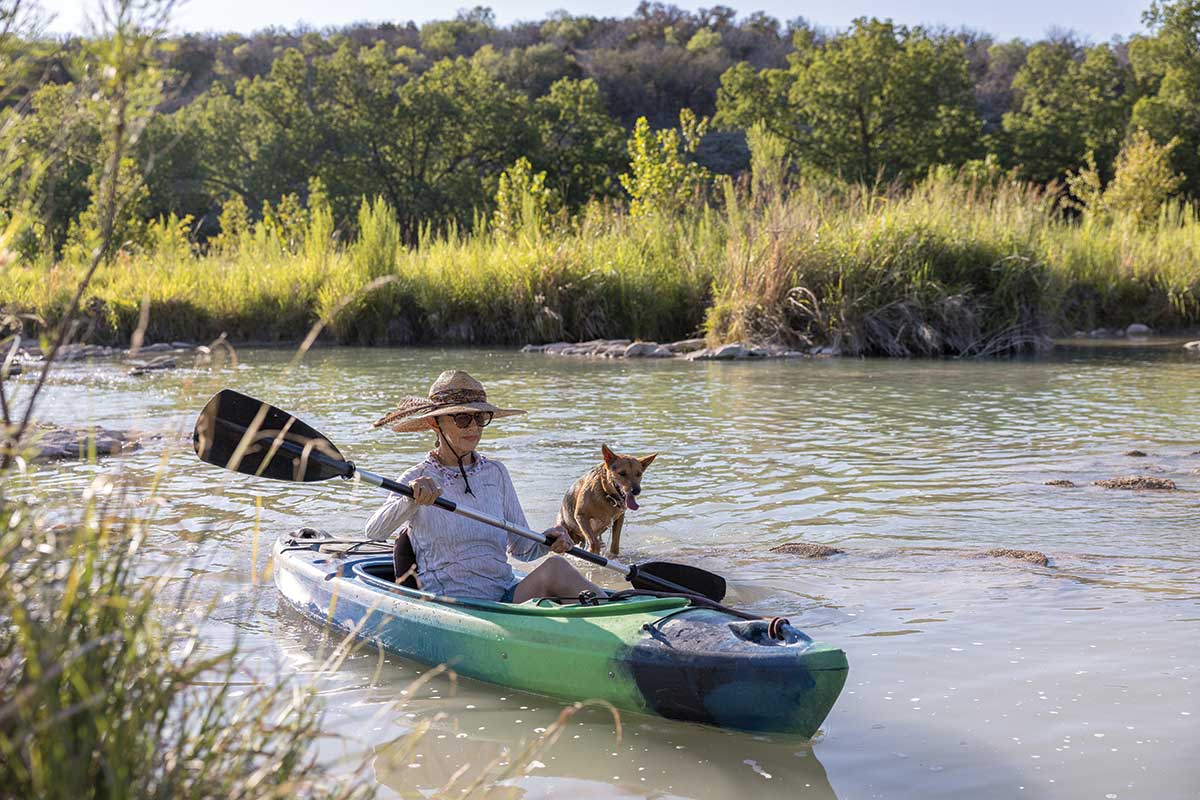
Maeckle paddles the Llano River.
Julia Robinson
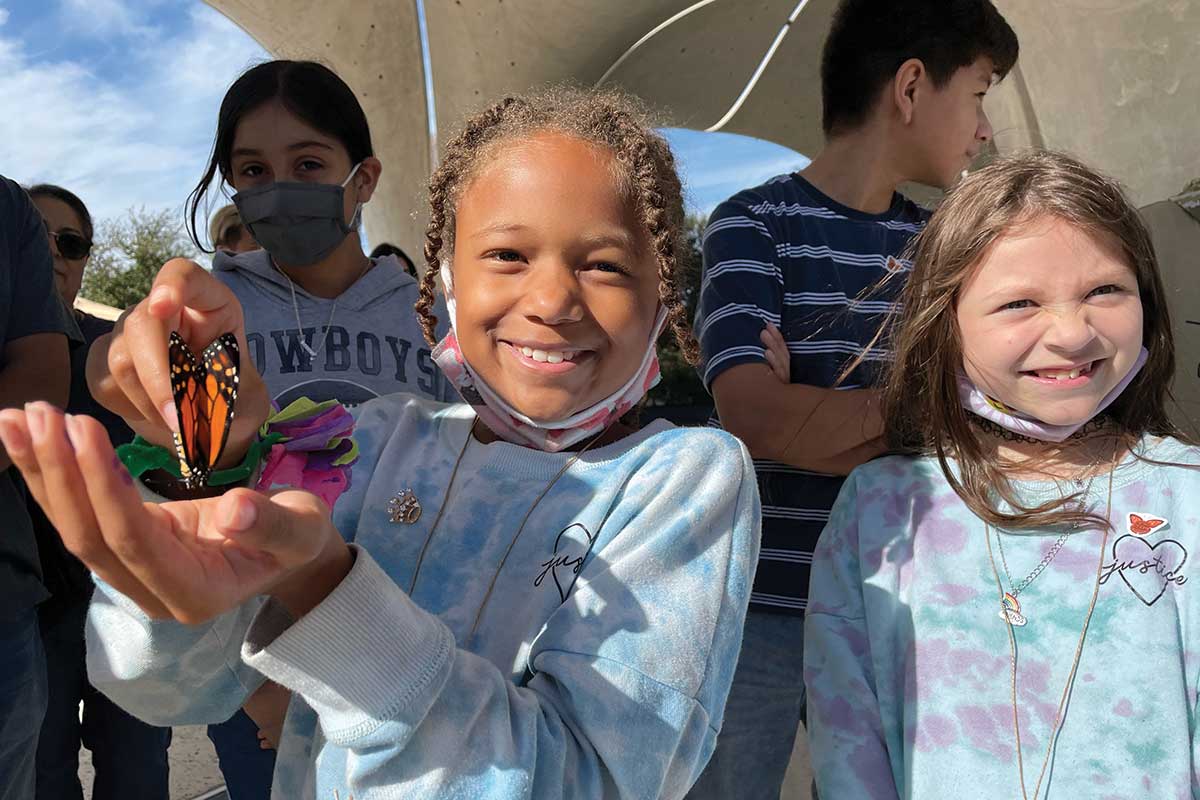
A child holds a monarch at the San Antonio festival.
Courtesy Drake White
Adult monarchs are easily identifiable, with two pairs of deep orange wings that have black veins and white spots along the edges. On average they weigh about as much as half of a dollar bill, with a wingspan of about 4 inches. Tagging doesn’t harm the delicate creatures.
Maeckle is part of a groundswell of advocates who are tagging and tracking the monarchs’ migration as well as planting and sustaining habitat that will help attract and protect them and other important pollinators, including bees.
But she’s an overachiever when it comes to monarchs. The citizen scientist launched an educational website called the Texas Butterfly Ranch, writes and gives talks about monarchs, and is the founding director of the Monarch Butterfly and Pollinator Festival, the seventh of which will be held October 8 at San Antonio’s Brackenridge Park.
The free one-day festival offers children and adults opportunities to learn about the monarch migration and the importance of other wildlife pollinators to our own food sources. The festival also features arts and crafts activities and other entertainment, as well as monarch butterfly tagging demonstrations. An estimated 2,500 people attended last year’s festival, and more than 550 butterflies were tagged.
Monarchs Matter
The monarch population has been in decline in recent years, but there is hope for this fall’s migration despite the continuing drought and its detrimental effect on native habitat.
The World Wildlife Fund announced in May that a survey found that the number of monarch butterflies in Mexico’s forests last winter actually increased 35% from the previous year. The rise “marks a sign of recovery—albeit a fragile one—and gives some reason for hope against a backdrop of several decades of decline for the iconic species,” the organization said in a release.
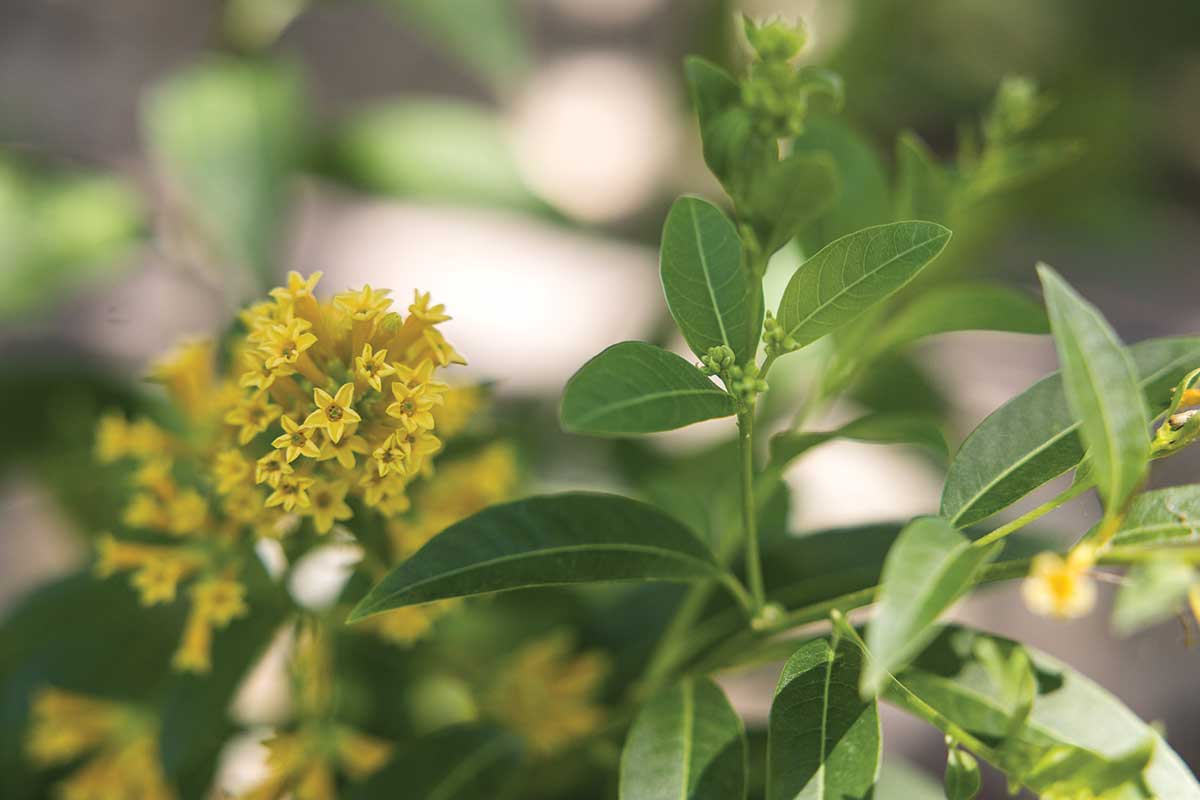
Yellow cestrum planted beside the San Antonio River Walk.
Julia Robinson
“The increase in monarch butterflies is good news and indicates that we should continue working to maintain and reinforce conservation measures by Mexico, the United States and Canada,” says Jorge Rickards, general manager of WWF’s Mexico office. “Monarchs are important pollinators, and their migratory journey helps promote greater diversity of flowering plants, which benefits other species in natural ecosystems and contributes to the production of food for human consumption.”
Butterflies are pretty, fanciful things that don’t bite or sting, and that makes them interesting to humans, prompting a willingness to help them, which can help all pollinators, says Judit Green, urban wildlife biologist for the Texas Parks and Wildlife Department. She calls the monarch an “ambassador for all pollinators.”
“Our beautiful rural Texas landscapes are in existence because pollinators helped pollinate it, producing the various native plants from wildflowers, bunchgrasses, vines, shrubs, small trees to canopy trees,” Green says. “These plants make up habitat for a host of wildlife. Therefore all wildlife benefit from actions we take to support our pollinators.”
These insects also support crop production, which the scientific world is quick to remind not to take for granted. “They say, ‘Thank a pollinator with every third bite you take,’ since about 33% of the food we eat is pollinated by pollinators,” Green says.

Bees collect pollen from a coneflower plant.
Julia Robinson
How To Help
There are simple steps Texans can take to attract monarchs and other pollinators: Grow and cultivate native plants, and don’t use pesticides, Green says. In addition, you can plant native milkweed, the host plant for monarch caterpillars, which feed on the leaves. Migrating monarchs lay their eggs on these plants.
There are larger endeavors underway as well. The city of San Antonio’s advocacy for monarchs dates back to 2015, when then-Mayor Ivy Taylor signed the National Wildlife Federation’s Mayors’ Monarch Pledge, a commitment to creating better habitats for pollinators and educating the public about them. Today 42 Texas mayors have active pledges through NWF, including those from small towns like Cuero, Liberty and Nolanville.
NWF named San Antonio the first Monarch Champion City, and current Mayor Ron Nirenberg has continued those efforts. The city’s pledge consisted of 24 specific actions, including holding or supporting a butterfly festival to raise awareness about pollinators. Not surprisingly, Maeckle took on that challenge.
“When I say I’m going to do something, I do it,” says Maeckle, who, with her husband, Robert Rivard, founded a nonprofit digital news website now called the San Antonio Report.
Green says the Monarch Butterfly and Pollinator Festival has been important to raising awareness about the problems pollinators face and how the public can help.
“Getting the public to support our pollinators, like the monarch, is crucial,” Green says.
Cheri Tondre, an instructional specialist for San Antonio Independent School District, participated in a 2017 festival workshop that led to the creation of a pollinator garden at Collins Garden Elementary. She says the festival offers children the chance to explore the natural world.
“Opportunities to engage with science, nature and community are important to engage students in the type of learning we need,” Tondre says. “They need to know they are part of the problem and solution.”
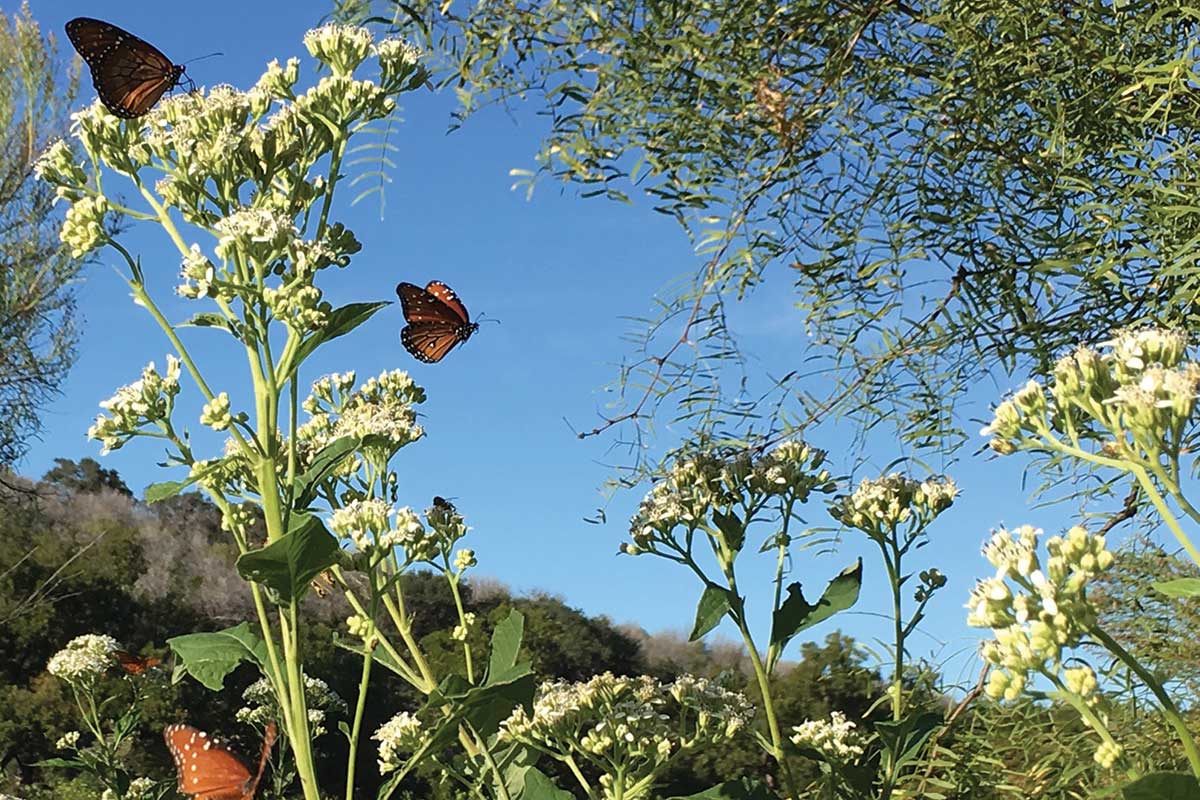
Queen butterflies fuel up on frostweed at the Llano River.
Courtesy Monika Maeckle
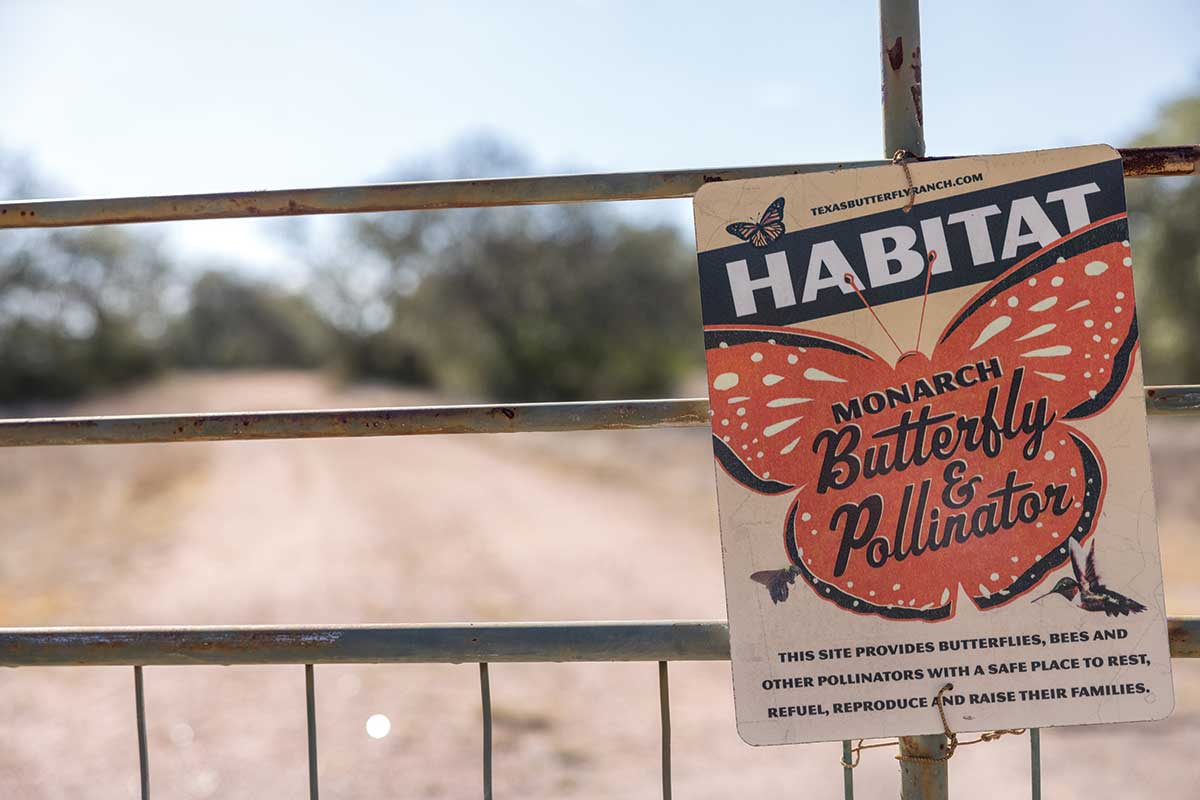
Maeckle posts this sign, available for purchase on the Texas Butterfly Ranch website, on the gate of her property on the Llano River in Mason and Kimble counties. She says the more typical placement is in urban yards to explain the messy, overgrown look of pollinator habitats.
Julia Robinson
Maeckle sees the monarch as an access point for viewing a number of complex issues—migration, climate change, sustainability. And she still takes joy in recalling how that evening in Hext ignited a lasting passion.
“They had always been there; I just hadn’t realized,” Maeckle says. “And it underscores the connectedness of us all.”
